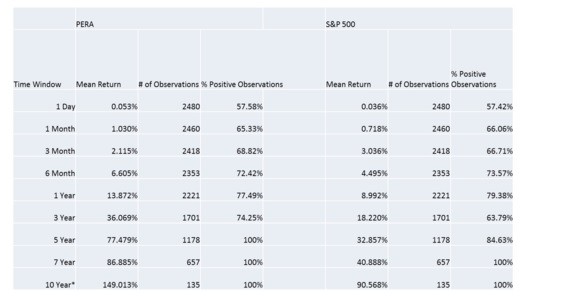Setting the Record Straight on Asset Allocation
Post on: 26 Июнь, 2015 No Comment

For asset managers, a new year generally means a fresh look at asset allocation, and recently released survey results from Reuters show that, on balance, investors are beginning 2012 with a more defensive posture. Amid a backdrop of global economic uncertainty, managers have reduced their equity exposure and pushed allocations to bonds to their highest level in more than a year.
Most investment professionals practicing today have heard the oft-repeated adage about the singular significance asset allocation has on portfolio performance, but it may be a minority that is aware of the empirical history and controversy underlying this topic. Evidence shows that the groundbreaking research on the importance of asset allocation has been poorly understood and widely misquoted. Practitioners of all stripes might benefit from a visit to the archives to better understand the evolution of asset allocation theory.
Asset allocation relies on the notion that different asset classes offer returns that are not perfectly correlated and diversifying portfolios across asset classes will help to optimize risk-adjusted returns. The topic went largely unexplored until 1986, when Gary P. Brinson, CFA, Randolph Hood, and Gilbert L. Beebower (known collectively as BHB) sought to explain the effects of asset allocation policy on pension plan returns. In their seminal paper, Determinants of Portfolio Performance , published in the Financial Analysts Journal. BHB asserted that asset allocation is the primary determinant of a portfolio’s return variability, with security selection and market timing (together, active management) playing minor roles. BHB’s 1986 study examined the quarterly returns of 91 large U.S. pension funds over the 1974 to 1983 period, comparing the returns to those of a hypothetical fund holding the same average asset allocation in indexed investments. A linear time-series regression yielded an average R-squared of 93.6%, leading BHB to conclude that asset allocation explained 93.6% of the variation in a portfolio’s quarterly returns.
In 1991 Brinson, Hood, and Brian D. Singer published an update to the BHB study that examined returns from the 1977 to 1987 period and found a return variance of 91.5%, essentially confirming the results of the original study. In today’s parlance, the BHB study went viral and almost immediately was incorporated into the marketing pitches of investment advisors.
But it did not go unchallenged. In 1997 William Jahnke published a critique of the BHB study. in which he argued: “The fundamental problem with BHB’s analysis is its focus on explaining return volatility rather than portfolio returns. In fact, investors should be more concerned with the range of likely outcomes over their investment planning horizon than the volatility of returns.” Jahnke went on to warn: “Fixed asset allocation solutions are inferior to analytically linking forward-looking strategic asset allocation solutions. As the investor’s circumstances or market opportunities change, so also should the investor’s asset allocation.”
The hoax Jahnke referred to was the financial industry’s exploitation and misrepresentation of the BHB study. He saw its embrace of the BHB study as an abdication of their active management responsibilities. But, as Hood later pointed out. “Nothing in the original paper suggests that active asset management is not an important activity. It was not the point of our paper, and our goal was not to demonstrate otherwise.”
It’s clear that the BHB study has been both poorly understood and widely misrepresented. In 2010 Roger G. Ibbotson, in The Importance of Asset Allocation , noted an unpublished 1998 study by Jennifer A. Nuttall and John Nuttall that found 49 of 50 surveyed citations of the BHB study to be inaccurate! And in a related webcast presentation. Ibbotson shared examples from the Nuttall and Nuttall study, pulled from the marketing materials of two of the world’s most prominent mutual fund companies (emphasis added):
One study suggests that more than 91.5% of a portfolio’s return is attributable to its mix of asset classes. In this study, individual stock selection and market timing accounted for less than 7% of a diversified portfolio’s return .
A widely cited study of pension plan managers said that 91.5% of the difference between one portfolio’s performance and another’s are explained by asset allocation.

Importantly, the BHB study was focused only on the variability of returns and not on return levels or relative performance. In 2000 Ibbotson and Paul D. Kaplan addressed these misconceptions in Does Asset Allocation Policy Explain 40, 90 or 100 Percent of Performance? The authors looked at 10 years of monthly returns for 94 balanced mutual funds and 10 years of quarterly returns for 58 pension funds and confirmed the BHB results, finding that asset allocation did indeed explain about 90% of the period-to-period variability of a portfolio. The authors found, however, that the high R-squared was primarily explained by the funds’ exposure to the capital markets in general — “a case of a rising tide lifting all boats.”
But Ibbotson and Kaplan also extended their research to consider asset allocation’s impact on the variation of returns among funds and the level of a typical fund’s return. They found that only about 40% of the return variation between funds is due to asset allocation, with the balance due to other factors, including asset-class timing, style within asset classes, security selection, and fees. And because the average of all investors is the market itself, with good managers and bad ones cancelling each other out, Ibbotson and Kaplan concluded (as BHB implied) that asset allocation ultimately accounts for 100% of the absolute level of returns.
In The Equal Importance of Asset Allocation and Active Management from 2010, Ibbotson and colleagues James X. Xiong, CFA, Thomas M. Idzorek, CFA, and Peng Chen, CFA, studied 10 years of returns for more than 5,000 mutual funds in order to measure the relative importance of asset allocation policy versus active portfolio management. Through the use of cross-sectional regressions, they decomposed a portfolio’s return into its three components — the market return, the asset allocation policy return in excess of the market return, and the return from active management. Noting that BHB did not separate the market returns from the incremental impact of asset allocation policy, Ibbotson later summed up their findings as follows:
About three-quarters of a typical fund’s variation in time-series returns comes from general market movement, with the remaining portion split roughly evenly between the specific asset allocation and active management.
So what is the takeaway for investors? The original BHB paper sparked a wave of related research, most notably that of Ibbotson and his colleagues, that has advanced our understanding of asset allocation’s impact on investment performance. The studies collectively demonstrate the importance of (1) being in the market, and (2) doing a strategic asset allocation. And while asset allocation remains a critically important piece of the investment process, active managers can take heart that its importance was likely overstated by BHB.














